Dripping faucets, low water pressure, or water spraying in all directions? These are all common faucet issues. While they might seem minor, they can lead to bigger problems or significant water wastage. So, how do you address these concerns?
Like any other household items, Faucets require regular maintenance and, occasionally, a repair. Before you get overwhelmed, know that many faucet issues can be fixed with a little knowledge and the right tools.
Why Is My Faucet Dripping?
Identifying the problem is the first step toward a solution.
- Worn Out O-Ring: An O-ring is a small rubber ring located in the faucet handle. Over time, this ring can wear out or become loose, leading to drips.
- Corroded Valve Seat: This is the connection between the faucet and the spout. Sediments can cause it to corrode, leading to leakage.
- Worn-Out Washers: Each use of the faucet causes wear on the washer against the valve seat, and this friction can cause it to wear out.

How Do I Fix a Dripping Faucet?
- Turn Off the Water: Before any repair work, ensure the water supply to the faucet is turned off.
- Identify the Type of Faucet: Is it a compression faucet (separate hot and cold handles) or a cartridge faucet (single handle)?
- Disassemble the Faucet: Using a screwdriver, remove the handle to inspect the internal components.
- Replace Damaged Parts: If the washer, O-ring, or cartridge looks worn out, replace them. Ensure replacements are an exact match.
- Reassemble the Faucet: Once the damaged part is replaced, put the faucet back together and turn on the water supply.
What If My Faucet Has Low Water Pressure?
- Clean the Aerator: Over time, sediments can accumulate in the aerator, leading to reduced water pressure. Unscrew it, clean out any debris, and screw it back on.
- Inspect for Leaks: Check under the sink for any leaking pipes. Leaks can reduce water pressure.
Before You Begin
Before you jump into fixing a pesky, leaky two-handle faucet in your home, there are a few things you’ll want to consider.
- First, equipping yourself with the necessary tools and supplies is necessary to tackle this project. Who knows what kind of surprises await beneath the cabinet or sink?
- Stock up on plumber’s tape, screws, washers and O-rings so you have everything you need when fixing a dripping. Test out the parts in contact with water before installing them; it could save you a lot of headaches down the line.
- Then turn off the water and drain excess water from both handles. Whether it’s a cold winter’s day or a hot summer one, checking if there is heat near your plumbing will help keep hands dry – remember that if you turn up the thermostat before laying your hands on an old plumbing fixture, frozen or otherwise.
What You’ll Need
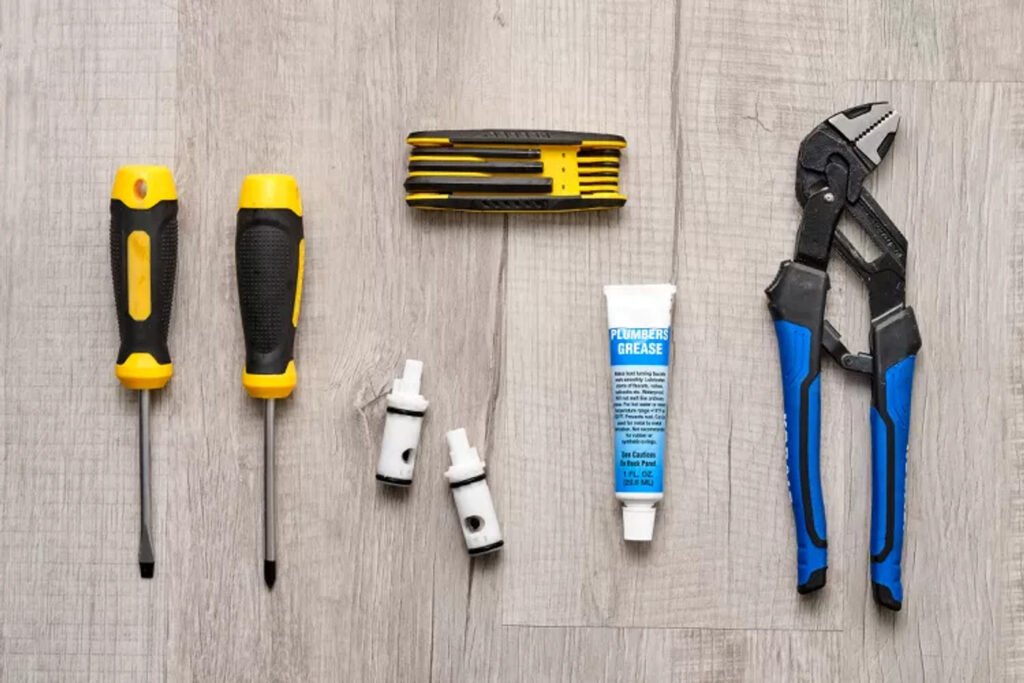
Equipment / Tools
- Flathead and Phillips screwdrivers
- Allen wrench
- Pipe wrench or tongue-and-groove pliers
Materials
- Replacement cartridge(s)
Remove the Faucet Handle
- To find out how the faucet handle is installed, inspect it closely. A set screw may be incorporated into the side or back of some handles. Alternatively, a decorative cap often conceals a set screw that attaches the handle firmly. Additionally, for specific models, an additional removable lever can be unscrewed from beneath the base of your handle – this also provides easy access to its set screw!
- To access a decorative faucet cover, use a small one-piece screwdriver to remove it quickly. Then utilize a Phillips screwdriver to take out the handle’s screws. If your cartridge faucet has set screws, an Allen wrench is all that’s needed to detach these components.
- Effortlessly lift the handle directly upwards to disconnect it from the faucet body.
Remove the Retaining Nut
- If you want to loosen the cartridge retaining nut, use a pipe wrench or tongue and groove nose pliers. Once unscrewed all the way, take it off the faucet’s body.
- Check for the brass screw at the top of your cartridge if available. This bolt holds everything together when you tighten it onto the faucet body. You may need to reuse this old screw with your new cartridge since some replacements don’t come with a fresh one.
- You will find a stem that fastens the cartridge in place for newer models. To access this item, unscrew the bonnet nut at the top of your faucet.
Remove the Old Cartridge
Replacing old cartridges can seem daunting, but this task is achievable with precision and a little patience.
- Start by noting the orientation of the faucet cartridge – in other words, how it’s inserted into the faucet body. This can be done by visually inspecting the inside of the faucet itself and studying relevant diagrams if necessary.
- Next, grab ahold of the cartridge firmly but gently and pull out the cartridge straight up to remove it from its moorings. At this point, you’ll gain access to all of its component parts, giving you better insight into whatever issue may have caused your faucet to leak in the first place.
- Now that you’re unpacking your faucet’s inner workings. Be sure not to lose any pieces on accident – they’re small, but their importance shouldn’t be underestimated!
- Finally, rinse the cartridge if necessary and set it aside – you’ll need it later when it’s time to install a new one. With all this preparation in place, you should now be ready for the successful replacement of your leaking two-handle faucet cartridge!
Buy a New Cartridge
To find the perfect substitution for your outdated cartridge, bring it to a local hardware store. Your new cartridge should come with fresh O-rings that you can lubricate using some plumber’s grease; this will make reinstalling the old one much more accessible if it proves difficult to remove. After picking up these two items, your faucet needs are sorted!
Install the New Cartridge
- If applicable, remove and replace the tiny brass screw at the peak of the cartridge stem. Utilizing the plumber grease, spread a minor amount to cover over its O-ring with your finger.
- It is essential to ensure the new cartridge is securely inserted into your faucet body in its original orientation. Align any tabs on the cartridge with their corresponding slots to guarantee a tight fit, and press firmly until it clicks into place.
- Now it’s time to tighten down the retaining nut. Ensure to do so with a firm but gentle touch – overtightening can damage the packing nuts, causing them to crack or otherwise become compromised.
- When done correctly, your newly installed cartridge should be ready for action!
Complete the Installation
- Secure the ink cartridge using a fixed nut, then carefully tighten it with either a wrench or pliers. Stay under-tightened. Then reinstall the water tap handle and fasten any screws or crosshead screws and the decoration cover (if applicable).
- Rotate the water shut-off valve counterclockwise to provide access to the faucet. Check if the tap is operating correctly.
FAQs
Q: What is the most common cause of a leaky, dripping two-handle faucet?

A: The most common cause of a leaky, dripping two-handle faucet is worn-out washers. Over time, washers can deteriorate and become brittle, creating gaps through which water can escape. Sometimes, the seat inside the faucet may be scratched or corroded, leaking and dripping. In addition to the washer, seals, gaskets, and O-rings may also become displaced or worn due to mineral deposits in hard water or other factors. Fortunately, fixing a leaky two-handle faucet is usually a relatively simple job by monitoring and replacing worn or broken components as soon as they’re identified. Diagnosing issues with old bathroom faucets can be tricky; if you cannot repair them, hiring a professional plumber is always a safe bet when dealing with leaks and pipes.
Q: How do you replace a double-handled faucet cartridge?
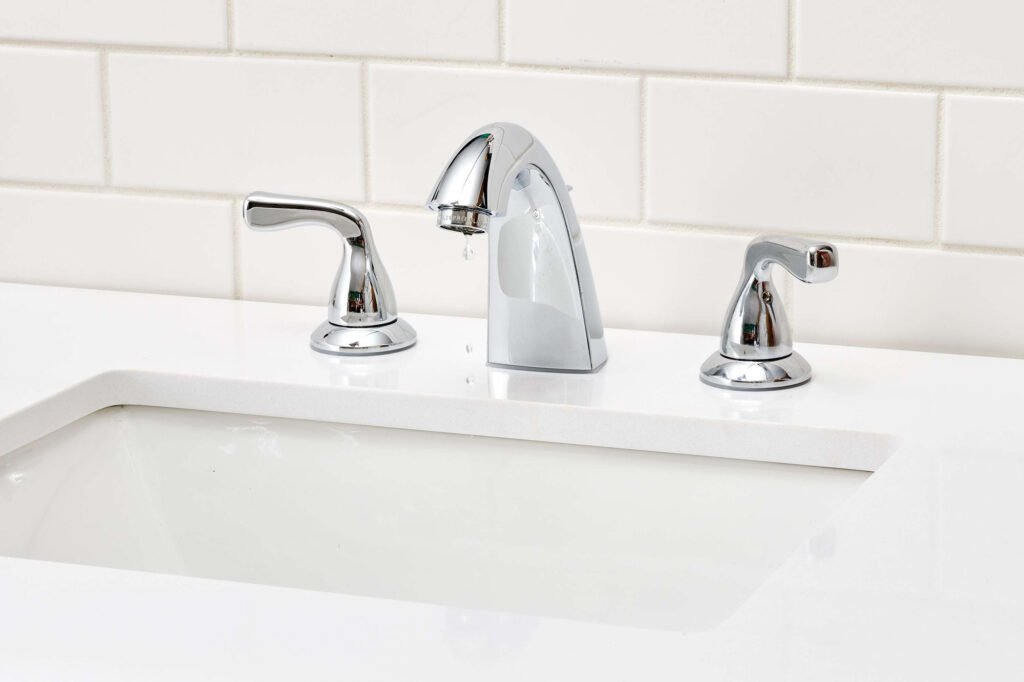
A: Never fear a leaky two-handle faucet again! Identifying the cause of the problem may seem daunting, but fixing it is easy if you can pinpoint whether it’s the hot or cold side. You don’t need to worry about wasting your hard-earned money by replacing parts you didn’t even need – replace the cartridge on whichever side is malfunctioning, and voila! Simple as that, you’ll be back in business – not to mention you saved yourself a good chunk of time.
Q: How do I know if my faucet cartridge could be better?
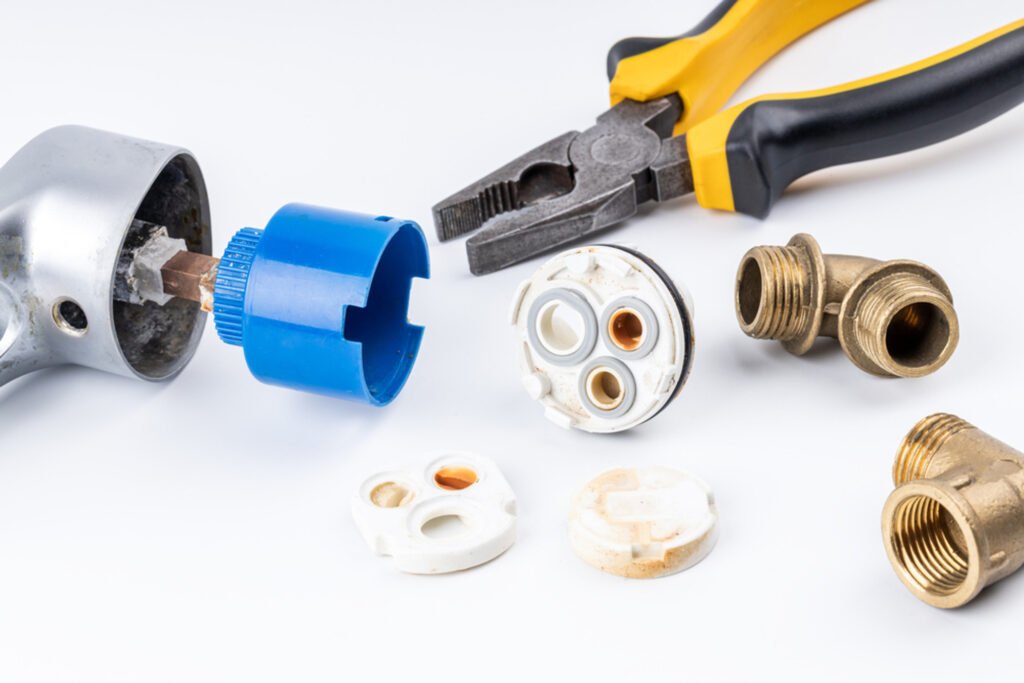
A: It’s never fun to spot a drip from the faucet – but it could be a great sign that something else is afoul. If you’re having difficulty getting your water to the desired temperature or being greeted with a steady dripping noise, there’s a good chance your cartridge needs replacing. So don’t panic; prevent more water waste and replace the cartridge – after all, at least some good will come out of this situation!
Q: Can I do this myself, or should I hire a plumber?
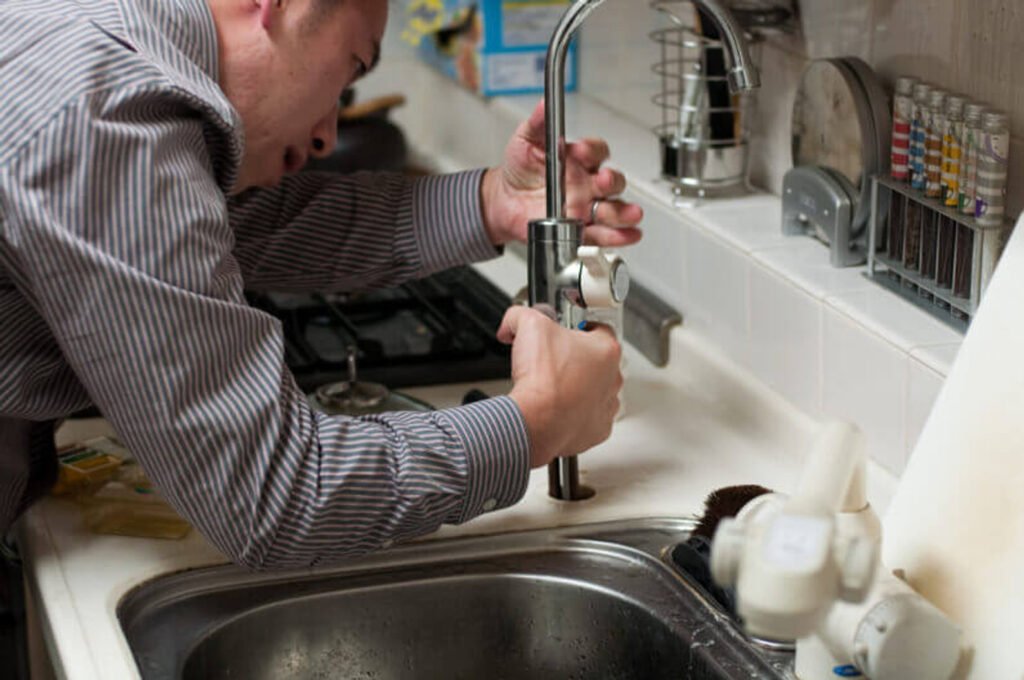
A: If you’re comfortable with essential tools and plumbing, replacing the cartridge on your two-handle faucet is a project that can be completed in just minutes. Keep all necessary items, such as new cartridges, washers, and wrenches, handy before beginning the project. Suppose you need help with how to proceed. In that case, it is always recommended to hire a professional plumber to ensure that the issue is fixed correctly and avoid any further damage or complications.
Q: How can I ensure my two-handle faucet lasts as long?
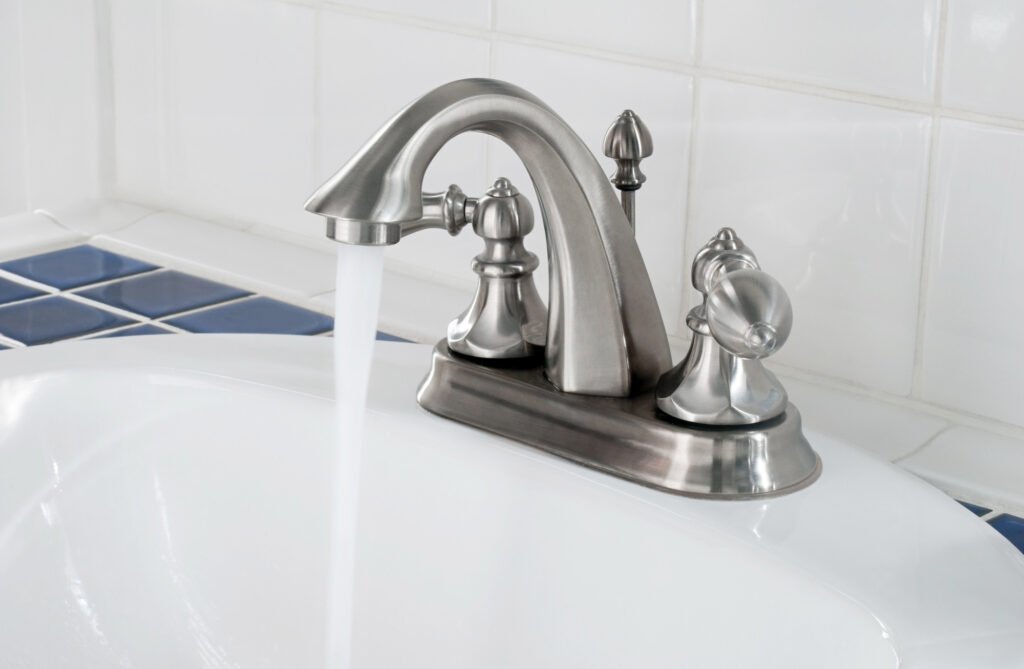
A: The best way to ensure that your two-handle faucet stays in good condition for a long time is to maintain it properly. Frequently check for any signs of damage or deterioration, such as loose parts, corrosion, or general wear and tear. Additionally, regularly clean the faucet and check for leaks; if it does begin to leak, take action quickly to prevent any further damage. Finally, replace the cartridge more often than the manufacturer’s recommended timeframe – this can help ensure your two-handle faucet lasts as long as possible!
Q: What advantages do you get when using a two-handle faucet?
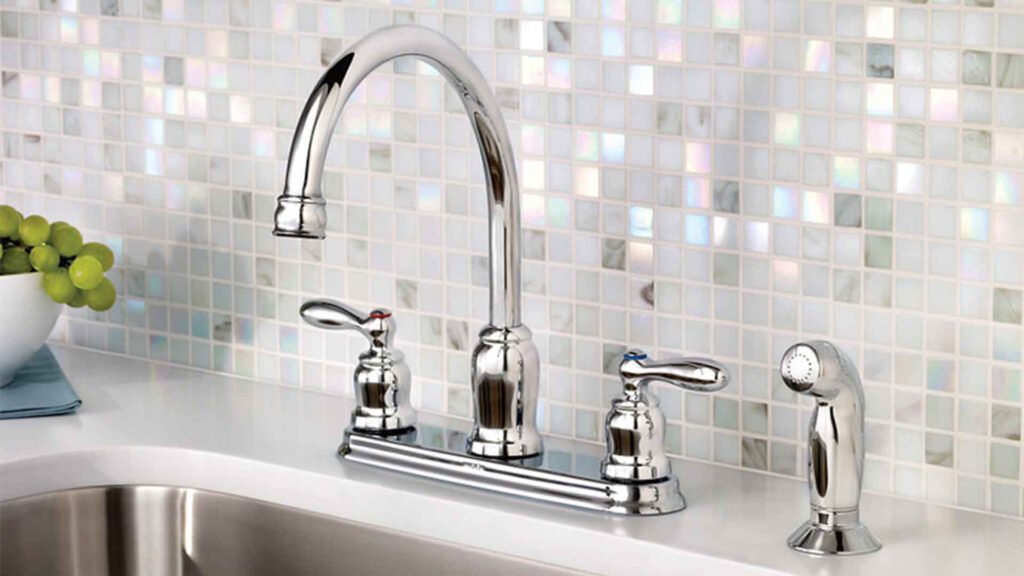
A: Two-handle compression faucets are perfect for those who want precise control over the temperature and water flow. They also have an elegant and timeless look, making them ideal to add a touch of sophistication to your bathroom or kitchen. Additionally, two-handle faucets are cost-effective, as they don’t require a lot of maintenance or replacement parts. Two-handle faucets are an easy and reliable way to get the job done!
Wrapping up
Diagnosing and repairing a leaky two-handle faucet doesn’t have to be intimidating! All you need is the correct tools, materials, and knowledge. With these essentials in hand, fixing any issues with your two-handle faucet should become as effortless as walking in the park.
At Hofen Sanitary, we have years of expertise in the faucet industry, allowing us to be your reliable source for all kitchen and bathroom needs. Our collection features a vast array of classic and contemporary designs – so you’re guaranteed to find something that fits your style perfectly! Explore what we have available today; it’ll undoubtedly be worth it! Let’s get started on sprucing up those spaces together now.

